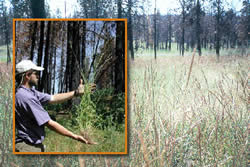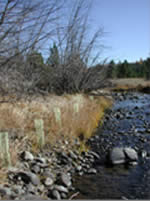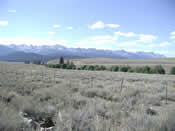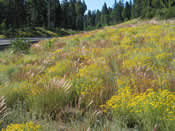- Forest Service Home
- Celebrating Wildflowers
- Home
- About Us
- News & Events
- Wildflower Viewing Areas
- Wildflower Ethics
- Forest Service Regions
- Just For Kids
- Teacher Resources
- Pollinators
- Native Gardening
- Native Plant Materials
- Invasive Plants
- Rare Plants
- Beauty of It All
- Interesting Plants
- Unique Communities
- Ethnobotany
- Special Features
- Wildflower Links
- Contact Us
USDA Forest Service Celebrating Wildflowers
|
|
|
 |
|
Why Use Native Plant Materials?
Native plant materials are used for a variety of purposes, such as stabilizing stream banks and floodplains, reducing soil erosion and sedimentation, reducing the spread of non-native invasive plants, improving wildlife and fisheries habitat, and mitigating the effects of wildfire and other types of disturbances such as illegal off-road vehicle use. Native plant materials are advantageous because they:
When selecting native plant materials, it is important to have knowledge of the geographic origin and genetic diversity of the plant source. A good practice is to choose plant sources from an area that matches the restoration site conditions as closely as possible. This helps ensure project success because the stock will be adapted to local climate and soil conditions, and more resistant to damage from freezing, drought, common diseases, and herbivores. The maintenance of genetic diversity in plant sources will enable plants to adapt to changing climatic and environmental conditions. Plant populations with low genetic diversity may be more susceptible to pathogens and environmental stresses, and less competitive with introduced invasive species. |
|
| NOTE: PDF format links require the Adobe Acrobat Reader to view. | |
| top | Disclaimers | FOIA | Privacy Policy | Quality of Information | Photo Credits & Use |
Location: http://www.fs.fed.us/wildflowers/nativeplantmaterials/whyuse.shtml
Last modified: Wednesday, 13-Oct-2010 14:33:01 EDT





